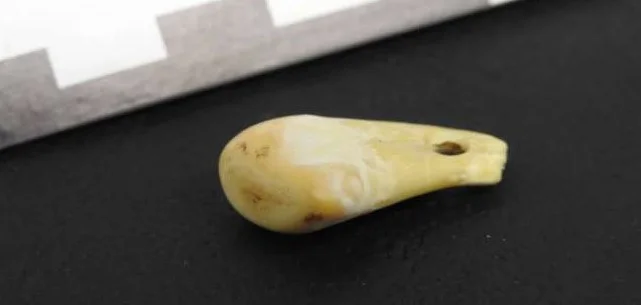Artifacts made of stone, bone or tooth provide important information about the livelihood strategies, behavior and culture of early humans. However, since burials and grave goods were so rare in the Paleolithic, attributing these artifacts to specific individuals has hitherto been difficult. This limited the possibilities of drawing conclusions about, for example, the division of labor or the social roles of individuals in this period.
To directly associate cultural objects with specific individuals and thus gain a deeper understanding of Paleolithic societies, an international interdisciplinary research team led by the Max Planck Institute for Evolutionary Anthropology in Leipzig has developed a new non-destructive method for DNA isolation. from bones and teeth. Although they tend to be less common than stone tools, scientists have focused specifically on artifacts made from skeletal elements because they are more porous and therefore more likely to preserve DNA in skin cells, sweat, and other bodily fluids.
A new method for DNA isolation
Before the team could work on real artifacts, they had to make sure that valuable objects wouldn’t be damaged. “The surface texture of Paleolithic bone and dental artifacts provides important information about their production and use. Therefore, preserving the integrity of the artifacts, including the microstructures on their surfaces, was a top priority,” he says. Leyden, who led the work with Max Planck’s geneticist, Matthias Meyer.
The team tested the effects of different chemicals on the surface structure of archaeological bone and tooth fragments and developed a phosphate-based, non-destructive DNA extraction method. “You could say we created a washing machine for antiquities in our clean lab,” explains Elena Essel, lead author of the study that developed the method. “By washing the artifacts at temperatures up to 90°C, we are able to remove DNA from the washes while keeping the artifacts intact.”
early failures
The team first applied this method to a series of artifacts at Kinsey Cave in France, excavated in the 1970s and 1990s. While in some cases it is possible to identify the DNA of the animals from which the artifacts were made, the vast majority of the DNA recovered came from people who processed the artifacts during or after excavation. To tackle the modern problem of human contamination, the researchers focused on materials that were freshly extracted and placed in clean plastic bags with sediment, wearing gloves and masks. The tridentate pendant from Bacho Kiro Cave in Bulgaria, home to Europe’s oldest reliable modern humans, showed significantly lower levels of modern DNA contamination; however, no ancient human DNA could be identified in these samples.
Necklace from Denisova Cave
Finally, this breakthrough was made possible by archaeologists Maxim Kozlikin and Mykhailo Shunkov, who excavated the famous Denisov Cave in Russia. In 2019, unaware of the new method being developed in Leipzig, they carefully excavated and placed an Upper Paleolithic deer tusk pendant. In this way, geneticists in Leipzig isolated not only the DNA of the animal, the wapiti deer, but also a large amount of ancient human DNA. “The amount of human DNA we extracted from the necklace was extraordinary,” says Elena Essel, “almost as if we had a human female sample.” The findings were published in the journal Nature.
Pierced deer tusk found in Denysova Cave after DNA extraction. Author: Max Planck Institute for Evolutionary Anthropology
Based on their analysis of mitochondrial DNA, a small piece of the genome that is only inherited from mothers to their children, the researchers concluded that most of the DNA likely came from a single individual. Using Wapiti and the human mitochondrial genome, they were able to estimate the necklace’s age between 19,000 and 25,000 without having to sample the precious object for C14 dating.
In addition to mitochondrial DNA, the researchers also recovered a large portion of its owner’s nuclear genome. They determined that the necklace was made, used, or worn by a woman based on her X chromosome number. They also found that this woman was genetically closely related to contemporary ancient individuals further east of Siberia, whose skeletal remains have been previously analyzed, called “Ancient Northern Eurasians.” “Criminals wouldn’t be surprised that human DNA can be extracted from a highly studied object,” says Mathias Meyer, “but it’s surprising that it’s still possible 20,000 years later.”
The scientists now hope to apply their method to many other Stone Age objects made of bones and teeth, and to learn more about the genetic origins and genders of the people who made, used or wore them.
Source: Port Altele
